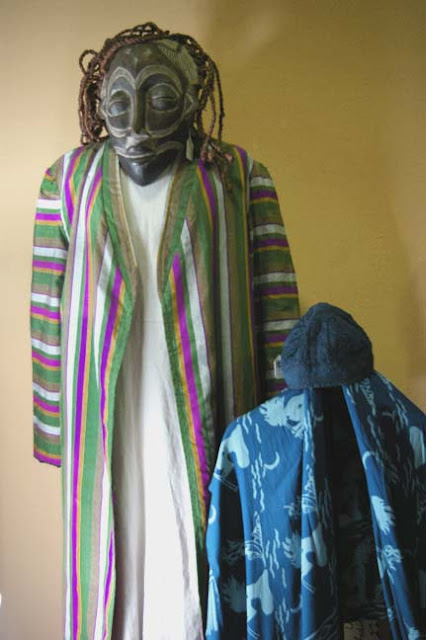Dr. Christi Bonds and I, Rachel Biel, have a passion in common: textiles! Both of us are members of Paducah Fiber Artists, a group that meets monthly for show and tell, potluck and support. Both of us quilt. And, both of us love textiles from around the world. Christi, a medical doctor who practices Integrative medicine, has an alternative health clinic in the heart of LowerTown's art neighborhood. A large gallery room was dedicated to this love of textiles, housing HeART of Healing Gallery. I had a booth downtown at 212 Broadway and was working two afternoons a week at Christi's gallery. We decided that it would make sense to move the gallery downtown and free up the space for more health related programs. We now have both of our booths across from each other, separated by an aisle. It looks like one big ethnic textile shop!
The booths work really well together as we have different specialties. HeART of Healing Gallery has grown an impressive collection of molas made by the Kuna Indians in Panama. Most are unfinished panels that can be framed or made into pillows, bags, or incorporated into quilts. But, there also many mola blouses, an unusual find in most mola circles. The blouses have panels on front and back and are set into the traditional gauzy floral fabrics so loved by the Kuna women. These people are tiny, tiny, so most of us will have to enjoy these blouses as textiles, although I suppose they could be altered to fit some of us more Nordic types.
Another major focus found at HeART of Healing's booth are scores of vintage Japanese kimono, both long and short. Christi originally bought these for the fabric as many quilters enjoy working with it, but we have found that our customers also love wearing the kimono. So, cut it up or put it on, it's up to you!
Rayela Art's focus moves to Central and South Asia: textile stamps from Afghanistan, ralli quilts from Pakistan, and Suzani embroidery from Uzbekistan.
Both of our booths also have plenty of small gift items, jewelry and interesting crafts that are bound to find their way to someone's home. HeART of Healing also has a nice display case filled with African beads and some nice sculptures, not pictured here.
























































